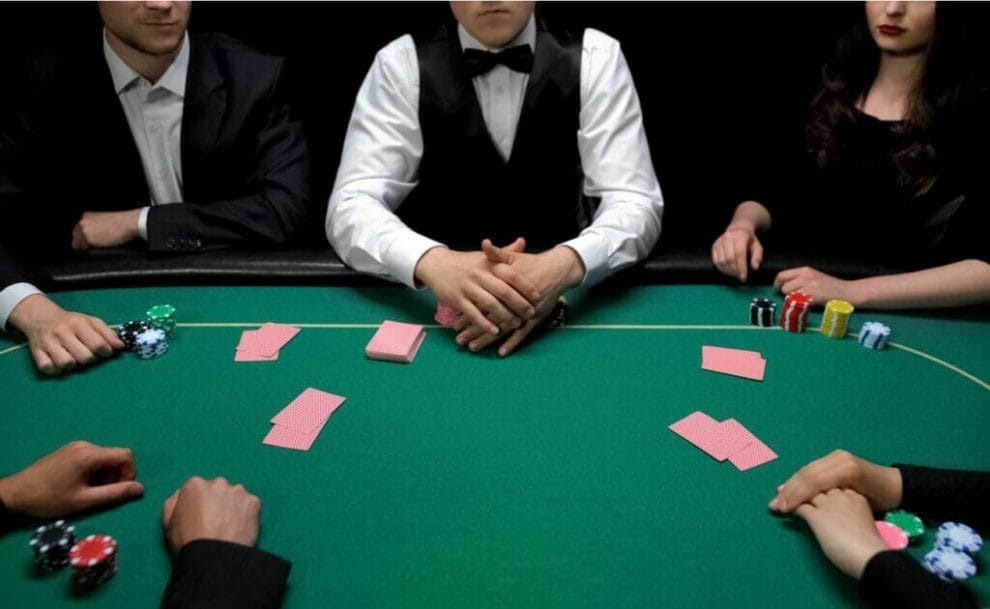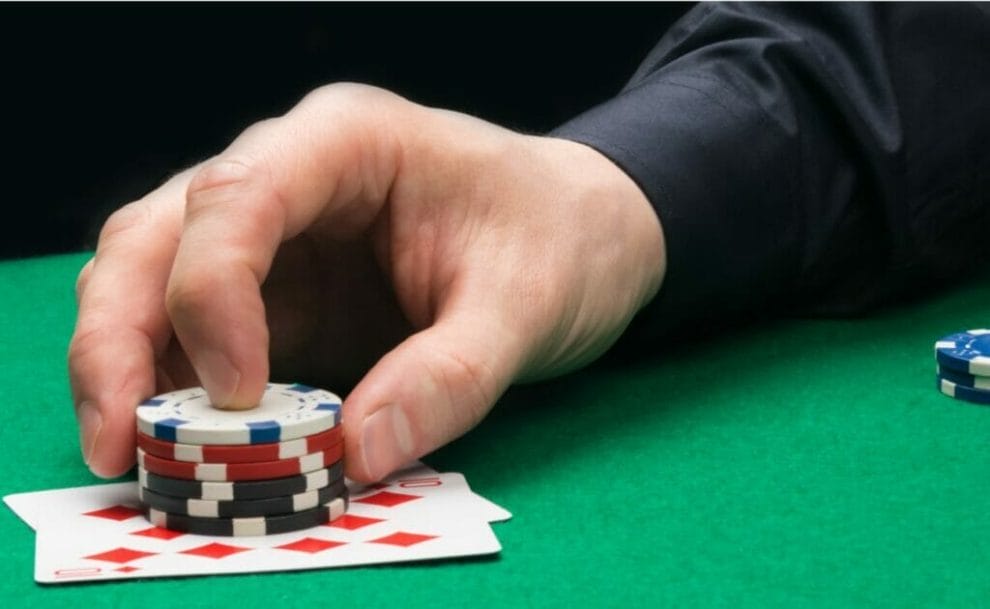
The game of Texas Hold’em poker begins after the flop. That’s when the first three community cards appear and things get real. Do you have a made hand that’s strong enough for you to go all in, or is it already time to fold? Does the board offer a strong or weak draw? Does this situation call for pot control or protection? Post-flop play is all about making good decisions based on these sorts of questions. Let’s take a look at some of the most important things to think about after the flop in online poker.
How to play a made hand
It’s always a great feeling when the flop comes in an online poker tournament and you find that you have a made hand. These hands could already be the best at the table: For example, a pair, three-of-a-kind, straight, full-house or flush. You can win a lot of chips if you play a strong hand well. The way to play them is simple. You should bet or raise if you think your hand is the best poker hand to play. If your hand is on the weak side, instead try to control the pot size and fold if your opponents’ actions make it too expensive. Avoid getting into large post-flop pots unless your hand is really good. It’s also important to remember that the more other players you’re up against, the stronger your hand has to be. Don’t slow-play unless you have a monster hand. On a draw-heavy board, focus on protection, but don’t throw money away protecting a marginal hand that could be out of the running.
A word on pairs: Only top pairs (one of your hole cards plus the highest card on the board) and overpairs (a pocket pair higher than all community cards) are good. A top pair cannot outrank an overpair. If you have two pair, it’s only strong if you pair the board with each of your hole cards. If you pair with just one card and there’s an existing pair on the board, that pair could give an opponent a stronger hand such as three-of-a-kind or full house.
How to play a draw

Draws are hands that require the right card or cards to turn up on the board to be completed by the turn or on the river. Some draws are strong, some are weak, depending on how many helpful cards (known as “outs”) could appear. A pocket pair only has two outs to help you make three-of-a-kind. A gutshot straight, where a middle card is missing, has four. An open-ended straight draw, with the missing card on either end of the sequence, has eight, and a flush draw has nine (the remaining cards in that suit that are potentially available.) If you have an open-ended straight and flush draw combined, you have a monster draw that could become a flush or a straight. If you don’t have a draw or a made hand but your hole cards are higher than any board cards, you have overcards that could draw to a top pair.
Learning how to play a draw correctly is one of the most important aspects of Texas Hold’em poker. The poker math around draws is complex and requires an understanding of outs, odds and pot odds. In general, though, it’s considered best to play draws passively if nobody raised or if you called a raise preflop. With strong draws, it’s worth calling moderate flop bets. With weak draws, it’s usually a good idea to just fold. Avoid the temptation to chase draws. The odds of completing a flush draw on the turn are less than 20%. Against only one or two opponents, it can pay to play aggressively with strong draws, for instance with a continuation bet on the flop.
The purpose of betting
Betting is a powerful weapon in Texas Hold’em poker. If you show strength at the right spots, you’ll generally win. But you need to have a purpose when you bet and raise. If you have a strong hand, the primary purpose of betting is to get money in the pot while bringing opponents with weaker hands along so they stay in the hand. This is called maximizing value. To keep opponents in the hand, you need to think about which hands they’ll call and which hands they’ll fold if you bet (this is known as their “range.”) After all, if they don’t call, they won’t put any money in the pot.
Another purpose of betting is bluffing opponents with better hands into folding so you win the pot. Bluffing is more of an art than a science, but there are some guidelines you can follow. For instance, you need to know how to represent a strong hand. You also need to be reasonably sure that your opponents have nothing. Don’t bluff against the nuts! Also avoid bluffing against several players at the same time, don’t bloat the pot with bluff bets and only bluff if you know your opponent will fold. It’s always preferable to bluff if your hand has the potential to improve. Remember that opponents in live poker tournaments will be able to see your expression, so work on that poker face.
A common way to show strength is to make a continuation bet. This happens when you represent a strong hand by raising preflop and continue your aggressive play by betting after the flop. A good flop for a continuation bet is one that doesn’t offer many draws or made hands. Not knowing whether you’re bluffing, opponents will often play it safe and fold.
You may also find yourself in a situation where your hand is strong, but your opponents may beat you on the turn or the river if they draw the right cards. Under these circumstances, you want your opponents to pay a high price to see the next community card. By placing a protection bet, you force any opponents with draws to either call or fold.
When not to bet

The most obvious reason not to bet or raise is when you have nothing in your hand. But there are other reasons. Pot control, for example, is when you see the flop and decide on the size of the pot you want to play for. If you have a monster hand, you’ll want to go big, but you’d be better off playing for a small pot if you were holding a weak hand. In both cases, it makes sense to play for pot control. A good spot for pot control is when you’re in position (the last player to act at the table) and there’s not much potential for draws on the board. If you check and lose to an opponent with a better hand, you keep the pot small and lose less. An opponent with a weaker hand will often fold if you bet, but if you check, they may be motivated to bet on the river, which grows the pot to your advantage.
Improve your post-flop play at Borgata Online
You can only read so much poker theory. The real way to improve is to play. Register at Borgata Online for unlimited opportunities to play Stud, Omaha and Texas Hold’em poker. Join our growing online community of poker fans and enjoy daily and weekly online poker tournaments that will suit your budget and experience. There’s no need to travel for live poker when you can experience first-class poker online at home! And in between games, you’re welcome to visit our online casino for a broad range of recreational gambling games, including slots, casino table games and video poker online (which happens to be a great way to practice solo.)
